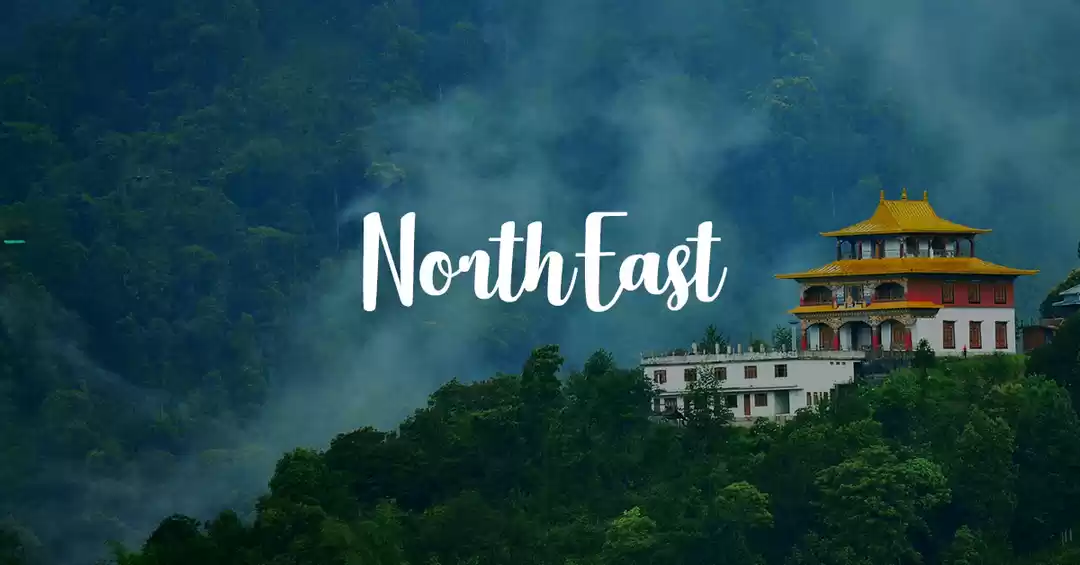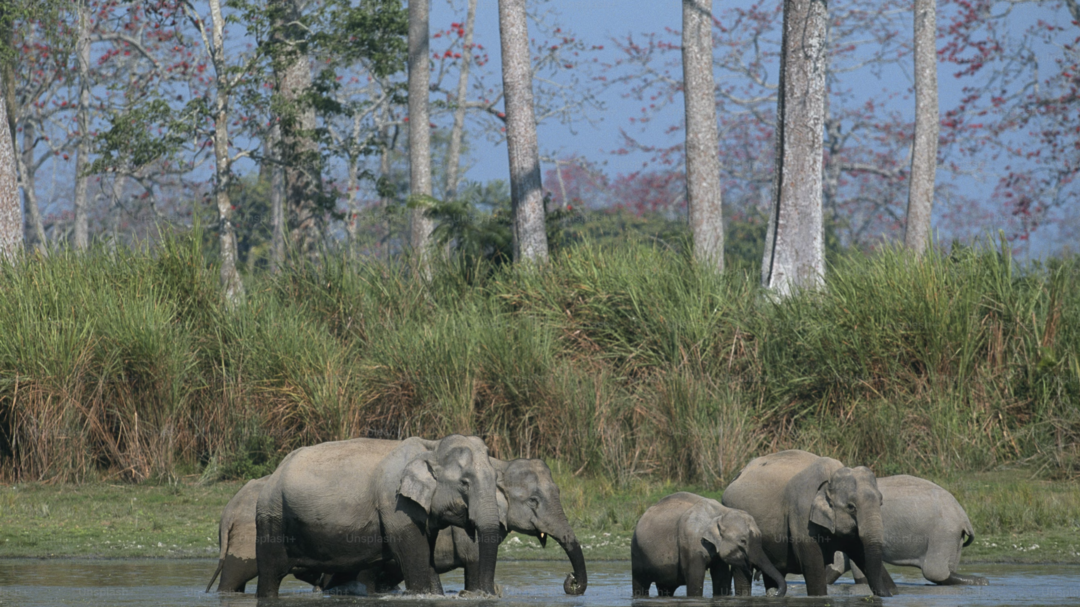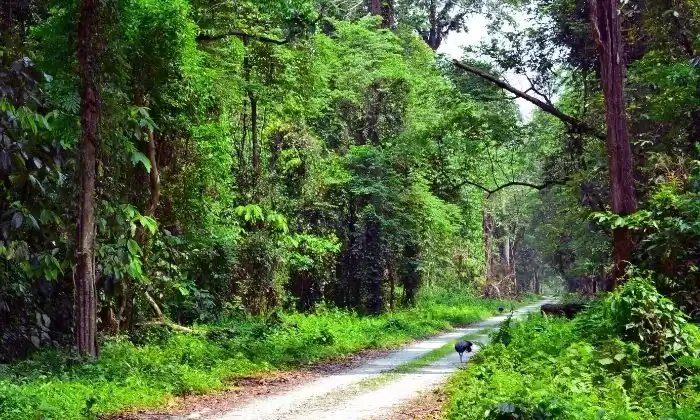
It was a Saturday in February – We assembled together at Sealdah Railway Station (Kolkata , West Bengal) and were ready to board the New Alipurduar bound Kanchan Kanya Express! Oh……What a feeling of Joy and eagerness had engaged my mind….after such a long time …. I was indeed travelling for a holiday and that too – in dense forests of North Bengal! Eternal sounds of Nature … Birds chirping... Trees swaying and the harmonic sound of leaves falling from trees were just music to my soul!
The route through the jungles
As the night crawled its way out, making way for a new day – the train steadily made its way deep inside the forests … The train engine’s whistle and the loud rattling noise of iron acted like an uproar being made into the wild announcing our arrivals from Concrete Jungles to Eternal Bliss!!!

Also we spent a little more time than 4 days - the suggested Itinerary for four days covering 3 National Parks is as below :-
Day 1 and 2 :- Buxa Tiger Reserve / Chilapata Forest
Day 2 and 3 :- Jaldapara Wildlife Sanctuary
Day 3 and 4 :- Gorumara National Park
All of them fall on the same train route - so you can easily board trains from the nearest railway stations mentioned below of the origin to reach the destination in a matter of a couple of hours.
Day 1 – Buxa Tiger Reserve and Chilapata Forest
Day 2 – Depart from Buxa Tiger Reserve and reach Jaldapara (Evening Visit to Jaldapara Wildlife Sanctuary)
Day 3 - South Khairbari Tiger Rescue Centre and Leopard Rehabilitation Center and departure for Gorumara National Park
Day 4 :- Gorumara National Park
The Buxa Tiger Reserve / Chilapata Forest
The Buxa Tiger Reserve, created in 1983 as the 15th tiger reserve, lies in Alipurduar sub-division of Jalpaiguri district of West Bengal. In 1992 The Government of West Bengal declared its intentions to constitute a National Park over 117.10 km² of the Buxa Wildlife Sanctuary and the State Government finally declared it as a National Park

The nearest railway station is Rajabhatkhawa (only for local and passenger trains) and the main railway station nearby is at Alipurduar (for express and long distance trains) – around 11kms away from Rajabhatkhawa. One can hire private cabs from the Alipurduar station to reach Buxa Tiger Reserve. For the frequent fliers – the nearest airport is Bagdogra
Where to Stay:-
There are several stay options at Rajabhatkhawa including Buxa Jungle Lodge operated by WBFDC (i.e. West Bengal Forest Development Corporation). The Buxa Jungle Lodge is easily the best accommodation in Buxa – although booking this can be a little tricky. Please do check this link for availability and latest tariff for the Buxa Jungle Lodge.

The Chilapata Forest: - The Chilapata is a dense forest near Jaldapara Wildlife Sanctuary in Dooars, Jalpaiguri District.
Lying about 20 km from Alipurduar – the forest forms an elephant corridor between Jaldapara and the Buxa Tiger Reserve, and is rich in wildlife. New species continue to be discovered here. The forest is also home to a number of Rhinos and Leopards


Top Attractions:-
Although staying at the Buxa Jungle Lodge provides you with the best feeling of hanging around in the wild , there are a couple of trips one should not miss during your stay
The Trek starts from Buxaduar - near Jayanti riverside all the way into the dense Buxa forest to reach the final trek destination , a small pond called “Pukhripahar” atop a small hill.

Jaldapara Wildlife Sanctuary
Jaldapara is situated in the foothills of eastern Himalayas – with the river Torsha flowing through this rain forest. The sanctuary which is mostly covered with tall grasses, encompassing flourishing vegetation and also boasts of a rich variety of wildlife.

How to Reach:-
Trek from Buxa Duar to Jayanti :- A Challenging 13 Km. long trek awaits for the adventure lovers in you , which passes right through the dense forests of Buxa Tiger Reserve (not the core areas though) .

Localites say this pond is largely infested with huge cat fishes ….. known as Magur !!!, Downhill - a visit to a local Watch Tower and back to Buxaduar – passionately recommended for adventure lovers and photographers!


How to Reach:-
Madarihat is the entry point for the Wildlife Sanctuary. It is located on the NH 31 (Siliguri-Hashimara), approximately 140 Kms east from Siliguri town, approximately 80 Kms north from Cooch Behar and approximately 50 Kms west from Alipurduar. All major trains halt at Madarihat station – approximately 7 Kms from the sanctuary. One can take hired taxis from the station to reach the sanctuary. For the frequent fliers – the nearest airport is again Bagdogra , about 150 Kms away.
Where to Stay:-
There are a few good accommodation facilities at Jaldapara. A couple of them are …
Hollong Tourist Lodge – It is only tourist bungalow situated within the Jaldapara Wildlife Sanctuary . Run and maintained by the West Bengal Tourism Dept. It has very limited capacity with merely a few rooms but it is at the core of the forest and by far the best accommodation considering it’s location and viewpoint . The USP of this place is that it has it’s own Salt Pit which is merely about a hundred Mts. away from the bungalow.

Jaldapara Tourist Lodge, Madarihat – The Lodge is situated very near to the Madarihat Station and outside the Jaldapara Wildlife Sanctuary. It much bigger than Hollong tourist bungalow and has dormitories, conference halls and a variety of rooms including A/c and Non A/c. It has a restaurant and one can also avail leisure activities at the Bar. It is also Run and maintained by the West Bengal Tourism Dept.

Top Attractions:- The two main attractions is as below
Jaldapara Wildlife Sanctuary: - Narrow roads filled with wobbly gravel lead you deep inside the dense forests of Jaldapara…Riding elephants and Jeep Safaris are the only way to move inside this forest.

The sanctuary boasts of a rich variety of wildlife and sightings could include the likes of The Asian or Asiatic elephant - the only living species of the genus Elephas and distributed in Southeast Asia from India in the west to Borneo in the east, the extremely rare Himalayan Vulture or Himalayan Griffon Vulture, Bisons , Leopards , Wild Boars and many more.


South Khairbari Tiger Rescue Centre and Leopard Rehabilitation Center: - An exclusive endeavour that is unmatched in the entire north-east region - This is a rehabilitation center for tigers and leopards nestled in South Khairbari forest.

A construction that serves as a shelter to Tigers and Leopards, mainly physically unwell or injured. Tigers and mainly leopards are brought over from all parts of the jungles of North Bengal and they are treated here for various wounds and illness prior to being released back into the Wild.

Located around 12 Kms deep inside the South Khairbari forest – this can be easily reached by hired tourist cars and jeeps from the Jaldapara Tourist Lodge – Madarihat

The grassland of Gorumara is famous for the Asiatic one-horned Rhinocerous !
How to Reach:-
The nearest railway station is Chalsa . One can take hired taxis from the station to reach the sanctuary. For the frequent fliers – the nearest airport is again Bagdogra , about 140 Kms away.
Where to Stay:-
Although there a number of privately owned resorts in Gorumara, the Murti Nature Education and Wilderness Resort (Chalsa) is one of the best places to stay in Gorumara/ Chalsa


Gorumara National Park :- You cannot afford to miss The Gorumara National Park in your trip to the Dooars forest. Located on the flood plains of Murti and Jaldhaka rivers the Gorumara National Park has a large variety of flora and fauna.

Operated by WBFDC (i.e. West Bengal Forest Development Corporation). The wilderness resort is easily the best accommodation in Chalsa / Gorumara. Do check the link for availability and latest tariff for Murti Nature Education and Wilderness Resort
Top Attraction: Gorumara National Park
A thirty minute journey from the Murti Nature Education and Wilderness Resort Kendra takes you deep inside the Gorumara National park. In view of its great diversity of plants and animals it was declared as a National Park in 1994 comprising a total area of approximately 80 sq. km.

The park has recorded fifty species of mammals, 193 species of birds, 22 species of reptiles, 7 species of turtles, 27 species of fishes and other macro and micro fauna. The Gorumara National Park is rich in large herbivores including its prime attraction – The Asiatic one-horned Rhinocerous, The Gaur (Indian Bison) , The Asian Elephant, Sloth bear, Chital, Sambar Deer, small herbivores include Barking deer, Hog deer and Wild boar

When to Go – The best time to visit the three national parks is between the months of December to March – when the weather is very good and chances of wildlife spotting are relatively higher than other months. Although there have been good number of sightings recorded during the summer months of April and May as well – when thirsty animals come out to the salt pits to quench their thirst!
























